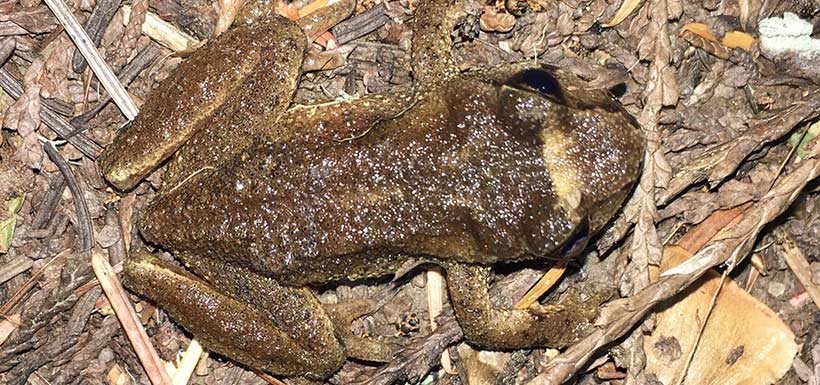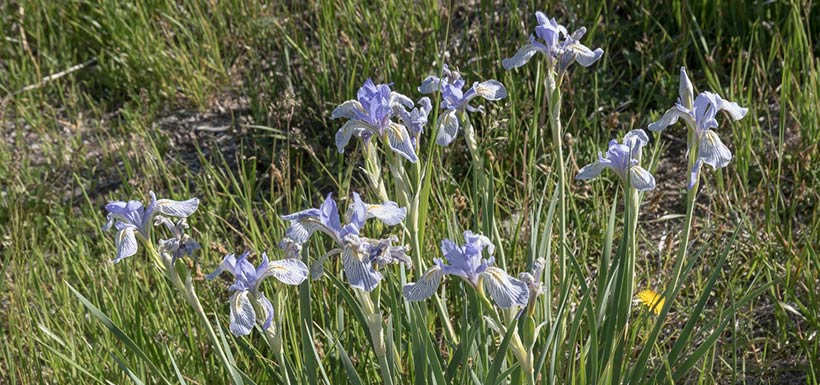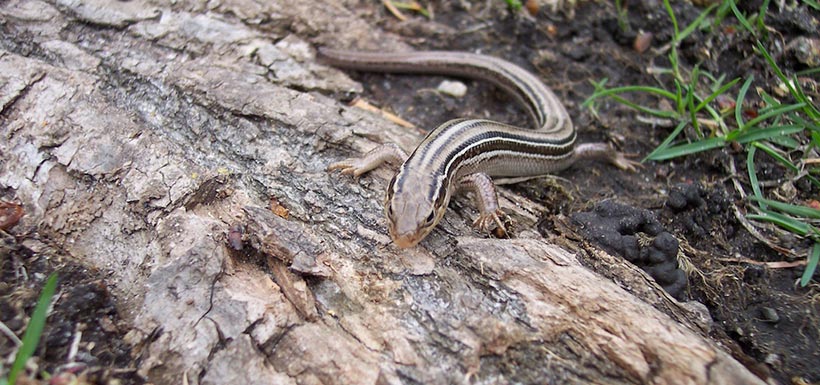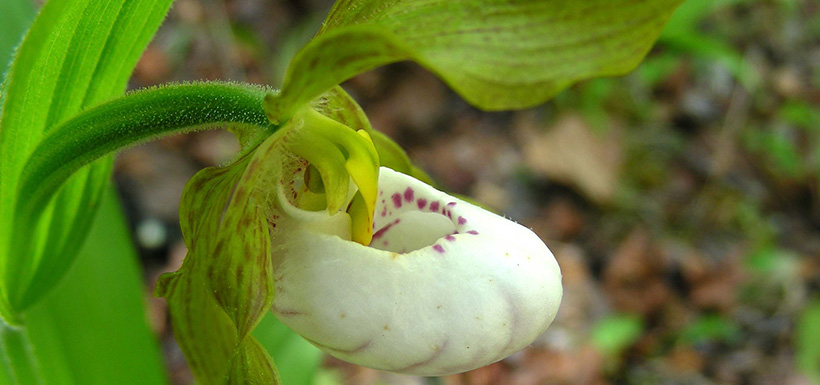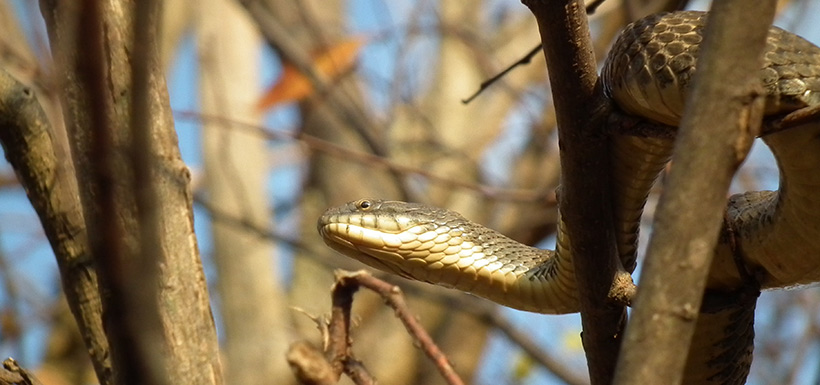We can recover Canada’s wildlife: Five examples of species NCC is helping save
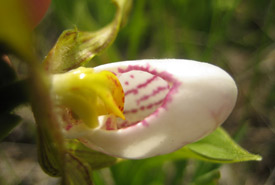
Small white lady's-slipper (Photo by Melissa Grantham)
These are tough times for many wildlife species and their habitats.
Over three-quarters of Earth’s terrestrial ecosystems (excluding Antarctica) have been directly modified by human activities1 , and most of our shrinking global wilderness is now restricted to just five countries, including Canada2. Our human influence extends into the oceans, with 87 per cent of marine habitats impacted by fishing, nutrient run-off and climate change3.
This loss and degradation of habitats is the main driver of what is often called the “sixth extinction”4. Extinction rates of plants and animals are now 100 to 1,000 times greater than historic levels, and future rates are predicted to grow5,6. Globally, over 26,500 species have been assessed as threatened7, and many wild species are experiencing rapid population declines8. Without a change in our course, some scientists predict that another 30 per cent of wildlife could be threatened with extinction this century9. This will impact life on Earth for millions of years10.
Related blog posts
Despite our country’s massive geography and large areas of remaining wilderness, Canada has not been immune to extinctions and species loss. The Committee on the Status of Endangered Wildlife in Canada (COSEWIC) has identified 40 wildlife species we have already lost, and assessed over 700 species at risk of being lost from Canada11. Over 1,000 additional species may also be endangered12.
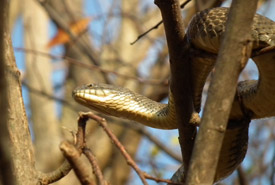
Lake Erie watersnake (Photo by NCC)
Our work at the Nature Conservancy of Canada (NCC) is as urgent and important as when we were founded in 1962. NCC was founded on the belief that civil action is needed to stop the loss of nature. And that although governments played a critical role in laying the foundations for conservation in Canada, and their continued support is essential, the future of conservation needs all of us.
We are an organization of thousands of small successes that add up to big and lasting impacts. NCC has helped protect 2.8 million acres (more than 1.1 million hectares) across Canada, including habitat for over 200 different species at risk.
Stopping the loss of our wildlife is critical. There are many projects where, without NCC, habitat would have been lost, and more species would have slipped closer to the edge of extinction. But in some places and for some species, our work has moved beyond just stopping loss. There are more and more examples where NCC is helping to reduce threats, restore ecosystems and recover wildlife populations. A growing legacy of places that are better for nature and future generations.
As we prepare for the dawn of the UN Decade of Ecosystem Restoration (2021-2030), Canada has an opportunity to lead the world in recovering wildlife, restoring their habitats and showing why this matters to our economy and well-being. Restoring wildlife takes time, but our Canadian collection of conservation successes is growing. Here are five small successes where the efforts of NCC and our partners have directly supported an official change in the status of at-risk wildlife species in Canada. These successes should inspire us all.
Click on the images in the slide show below for more information.
Sources
1.Ellis EC, Klein Goldewijk K, Siebert S, Lightman D, Ramankutty N. Anthropogenic transformation of the biomes, 1700 to 2000. Global ecology biogeography. 2010;19(5):589-606.
2.Watson J, Venter O, Lee L, Jones KR, Robinson J, Possingham H, et al. Protect the last of the wild. Nature. 2018;563:27-30.
3.Jones KR, Klein CJ, Halpern BS, Venter O, Grantham H, Kuempel CD, et al. The location and protection status of Earth’s diminishing marine wilderness. Current Biology. 2018;28(15):2506-12. e3.
4.Pimm SL, Brooks TM. The sixth extinction: How large, where, and when. In: Raven PH, editor. Nature and Human Society: The Quest for a Sustainable World. Washington DC: National Academies; 2000.
5.May RM, Lawton JH. Extintion rates: Oxford University Press; 1995.
6.De Vos JM, Joppa LN, Gittleman JL, Stephens PR, Pimm SL. Estimating the normal background rate of species extinction. Conservation Biology. 2015;29(2):452-62.
7.IUCN. The IUCN Red List of Threatened Species: International Union for Conservation of Nature; 2018 [Available from: https://www.iucnredlist.org/.
8.World Wildlife Fund. Living Planet Report - 2018: Aiming Higher. Gland, Switzerland.: WWF; 2018.
9.Steffen W, Rockström J, Costanza R. How Defining Planetary Boundaries Can Transform Our Approach to Growth. Solutions. 2011;2(3):59-65.
10.Davis M, Faurby S, Svenning JC. Mammal diversity will take millions of years to recover from the current biodiversity crisis. Proc Natl Acad Sci U S A. 2018;115(44):11262-7.
11.COSEWIC. Canadian Wildlife Species at Risk. Committee on the Status of Endangered Wildlife in Canada; 2018.
12.Canadian Endangered Species Conservation Councill. Wild Species 2015: The General Status of Species in Canada. Ottawa: National General Status Working Group; 2016.

